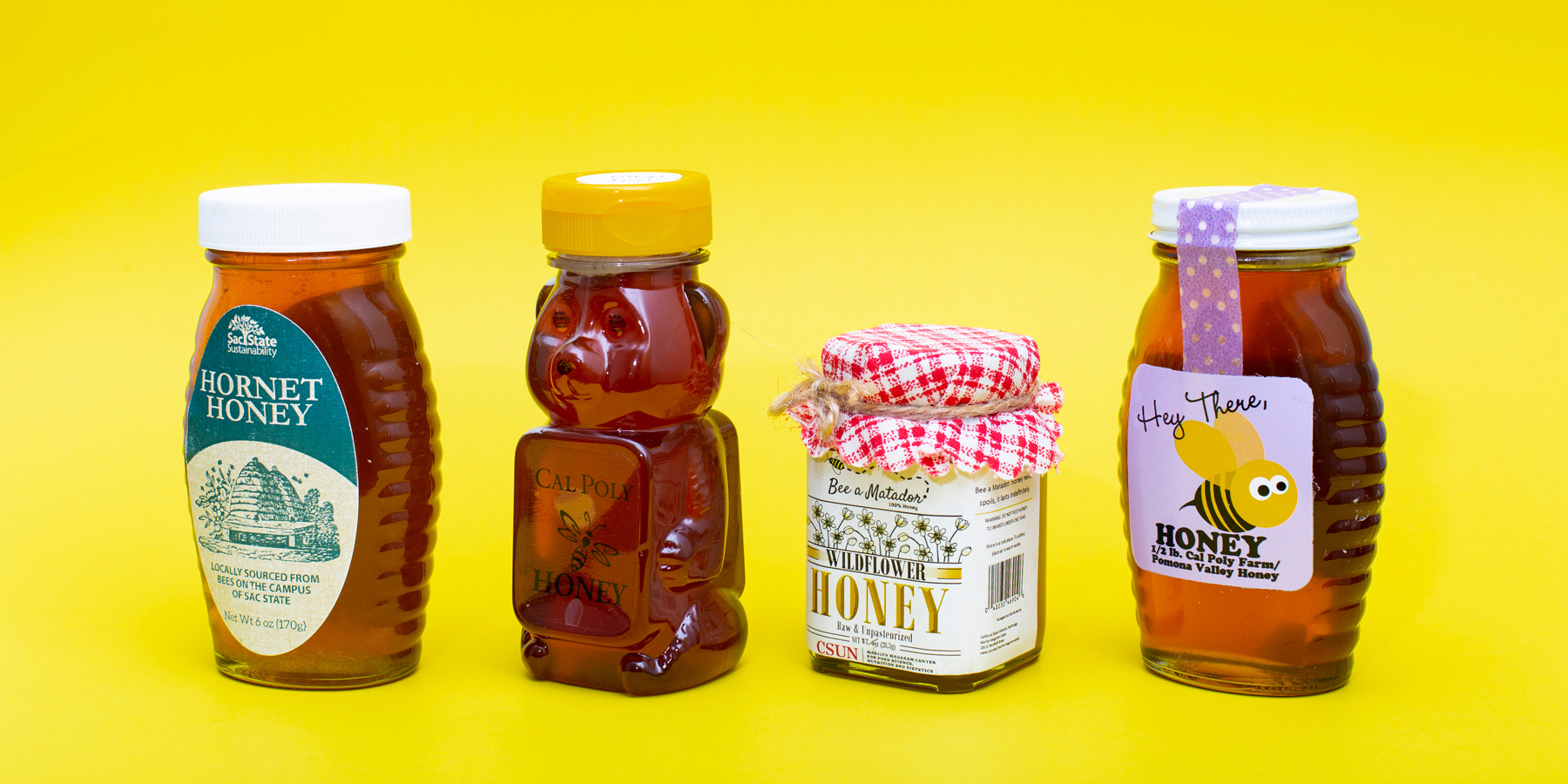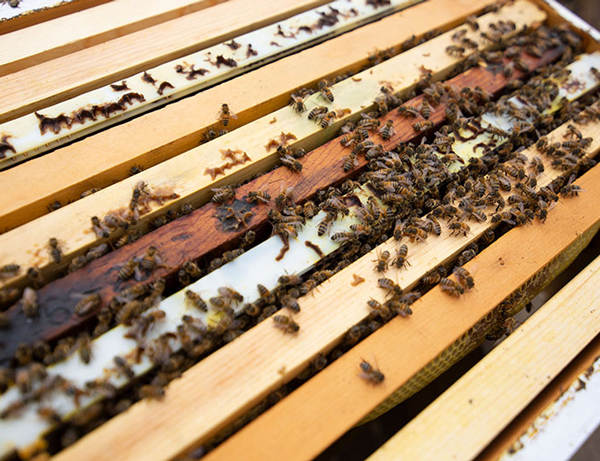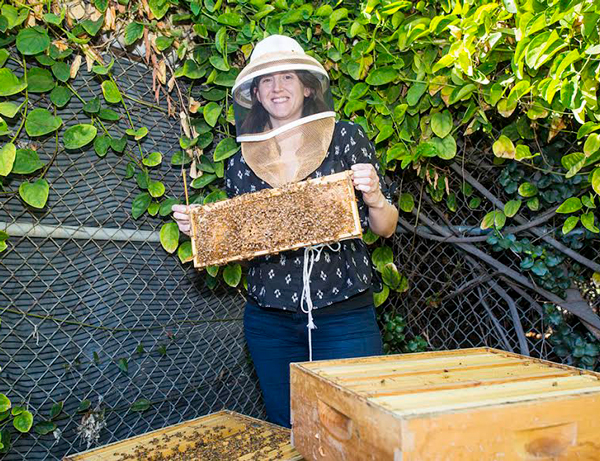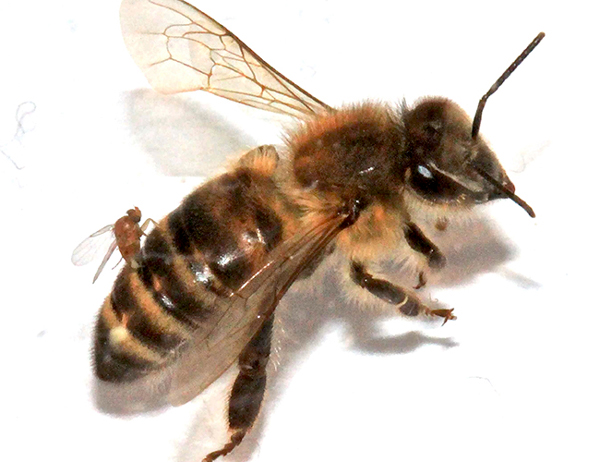
Show Me The Honey
Cal Poly Pomona faculty want more students to learn the art of beekeeping. And if the public learns, too, that’s even better.
HOW SWEET IT IS!

Several CSU campuses make their own honey from on-campus bee hives. From left: Sacramento State’s Hornet Honey; Cal Poly San Luis Obispo; CSUN’s Bee a Matador Wildflower Honey; and Cal Poly Pomona’s Hey There, Honey. (Not pictured: CSU Channel Islands)
THE BUZZ AROUND THE CSU

BEE-ING NUMBER ONE
Since spring 2018, CSU Channel Islands has offered an apiculture and bee biology course with about 15 on-campus hives. CSUCI is the first four-year college in California to be named a Bee Campus USA by the Xerces Society.
LEARN ABOUT CSUCI

INSIDE THE BELLY OF THE BEE
At CSUN, microbial ecologist and genomicist Rachel Mackelprang, Ph.D., is teaching a bee biology class that studies the insects’ gut microbiome to learn about bee health.
LEARN ABOUT CSUN

WATCH OUT FOR ZOM-BEES
San Francisco State biology professor John Hafernik, Ph.D., discovered a phenomenon that turns bees into “zombies” when they’re infected by a fly parasite.
LEARN ABOUT SFSU
Story: Hazel Kelly
photoGRAPHY: Cal Poly Pomona, patrick record
Share this story